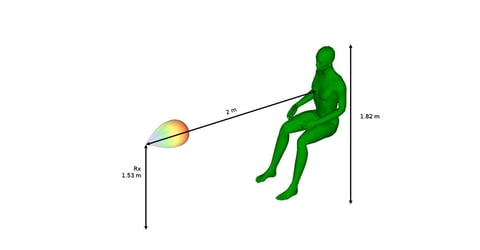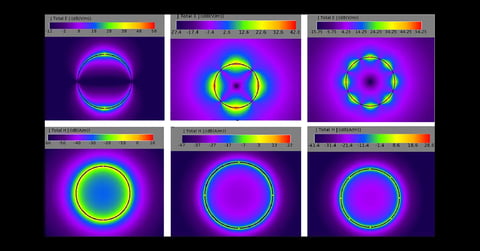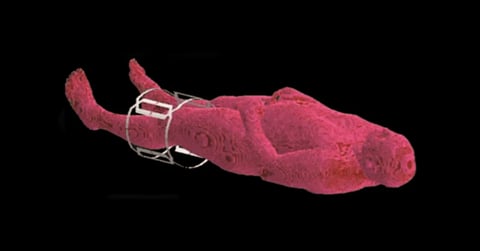Temperature Rise Simulation in 64 MHz Birdcage Coil
A lowpass birdcage coil designed to operate at 64 MHz is simulated to show B fields in both unloaded and loaded conditions. When loaded with a heterogeneous human head model, the temperature rise caused by exposure to the fields of the coil is computed using XFdtd’s biological thermal sensor.
As described in the paper [1], the coil is a 16-rung, low-pass birdcage coil with a 27 cm diameter, 22 cm length, and a shield diameter of 34 cm, shown in Figure 1. This example will consider only the conventional configuration from the paper since the other configurations are readily constructed with slight modifications to this basic design. The coil geometry is discretized using XFdtd’s PrOGrid Project Optimized Gridding with varying cell sizes. Additionally, XACT Accurate Cell Technology is used to resolve the curvature on all parts of the coil. Figure 2 shows the XACT representation of the FDTD mesh for a portion of the coil. A high resolution human body model will be loaded into the coil for the loaded simulations.

Figure 1: CAD representation of the lowpass birdcage coil with a conventional shield.
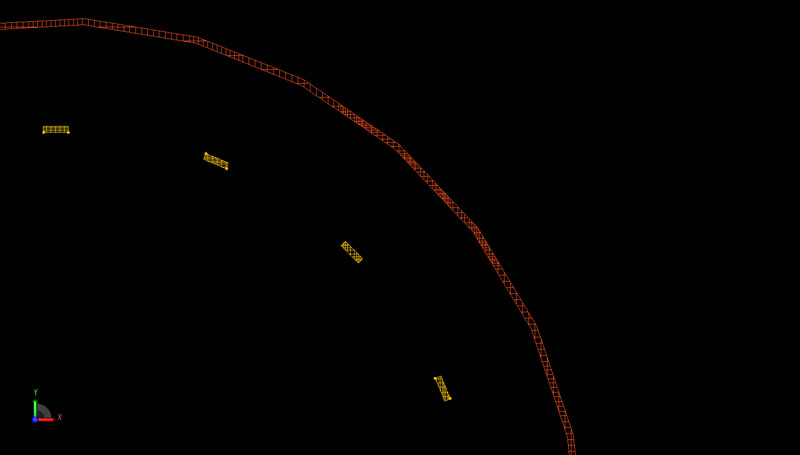
Figure 2: PrOGrid and XACT mesh of a portion of the coil geometry.
At each rung of the birdcage, a gap exists where a phased voltage source is added with the phase matching the angular position of the rung in the geometry. Sensors are set to save the steady-state B fields in two planes of the geometry and the simulation is executed with a 64 MHz sine wave as the source signal.
Following the first simulation, with an unloaded coil, the |B1+| and B fields are displayed as shown in Figures 3 and 4 respectively. As can be seen in Figures 3 and 4, the field through the center of the coil shows good symmetry as is desired. For all figures displaying fields, the input power to the coil has been adjusted to 1 W and the scale bar has been set to better visualize the fields in the center of the plane.

Figure 3: |B1+| on the axial plane in the unloaded coil showing the balanced field distribution.
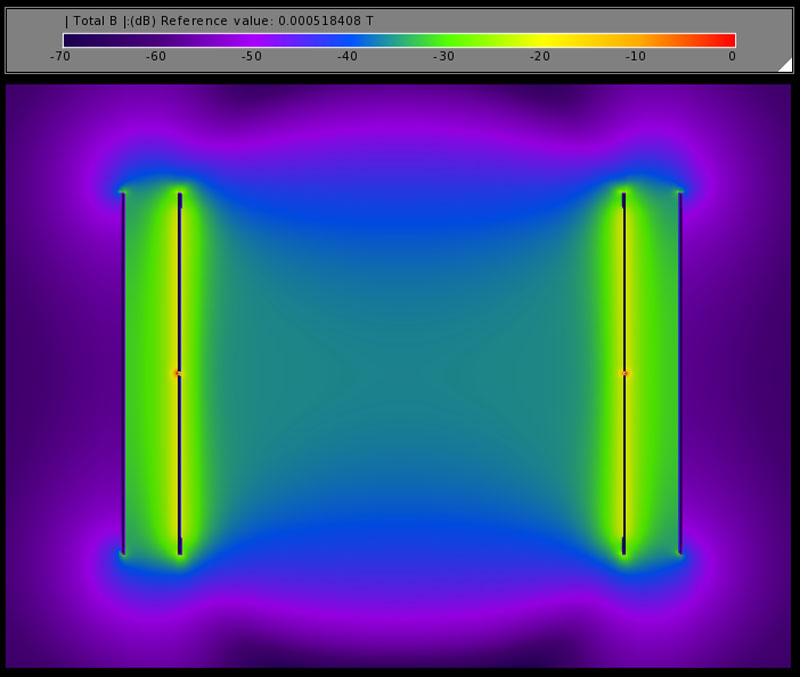
Figure 4: B on the sagittal plane in the unloaded coil.
A model of the Visible Human Head, extracted by Remcom’s Varipose software, is then used to load the birdcage, as shown in the 3D view of Figure 5. Axial and sagittal planar views of the resulting mesh of the head in the coil can be found in Figures 6 and 7.
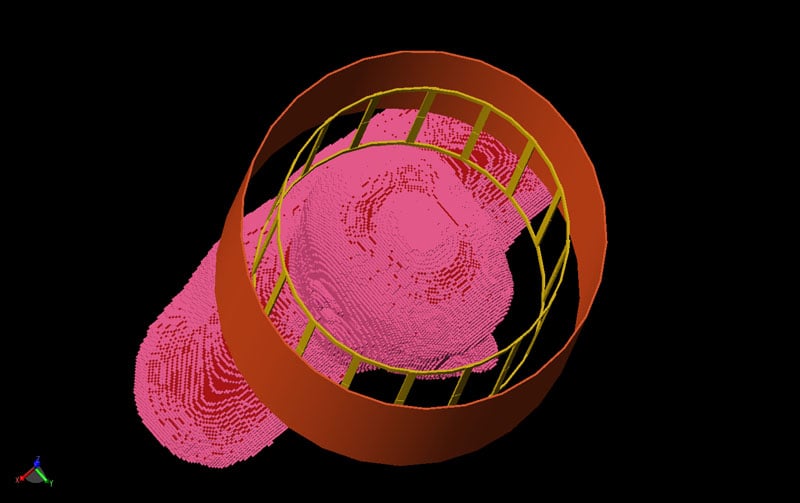
Figure 5: Coil loaded with human head.
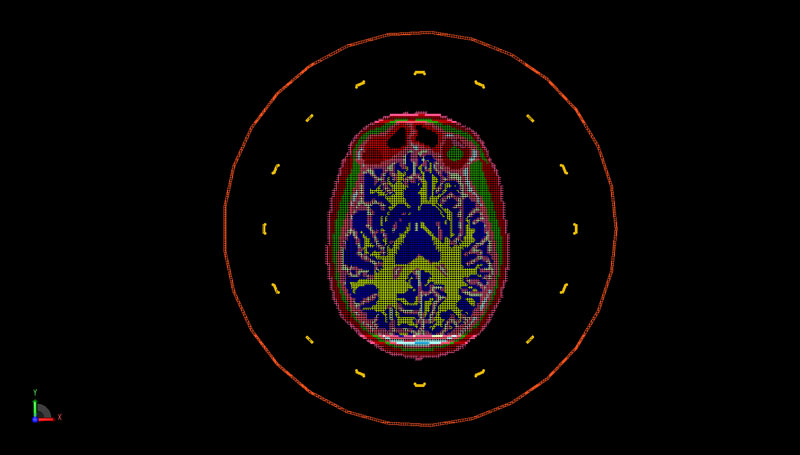
Figure 6: PrOGrid mesh representation of the axial plane of the head and coil geometry.
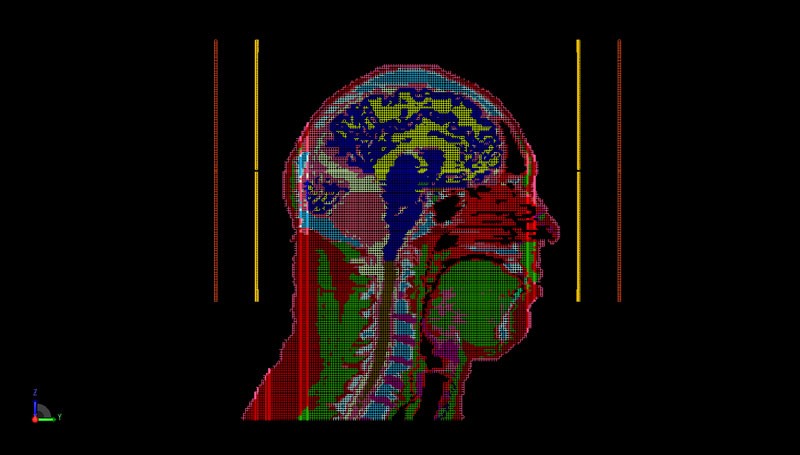
Figure 7: PrOGrid mesh representation of the sagittal plane of the head and coil geometry.
Following a second simulation, with a loaded coil, the |B1+| and B fields through the loaded coil are shown in Figure 8 and 9 respectively. As expected, the introduction of the human head disrupts the |B1+| fields. The paper performs a similar analysis for three other end-ring/shield configurations and finds the conventional configuration provides the most homogeneity for an unloaded coil, but the least homogeneity when loaded.
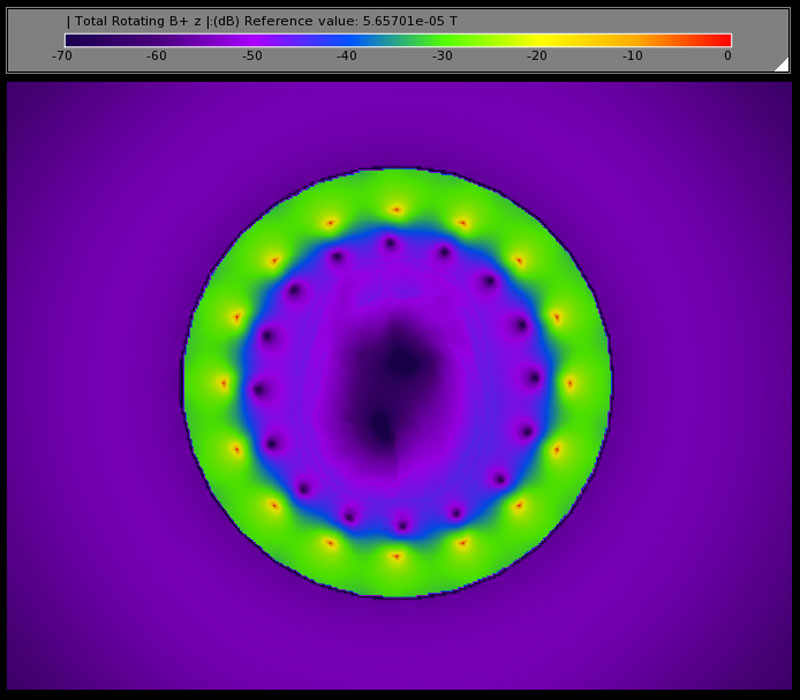
Figure 8: |B1+| on the axial plane of the loaded coil showing the disturbed field distribution.
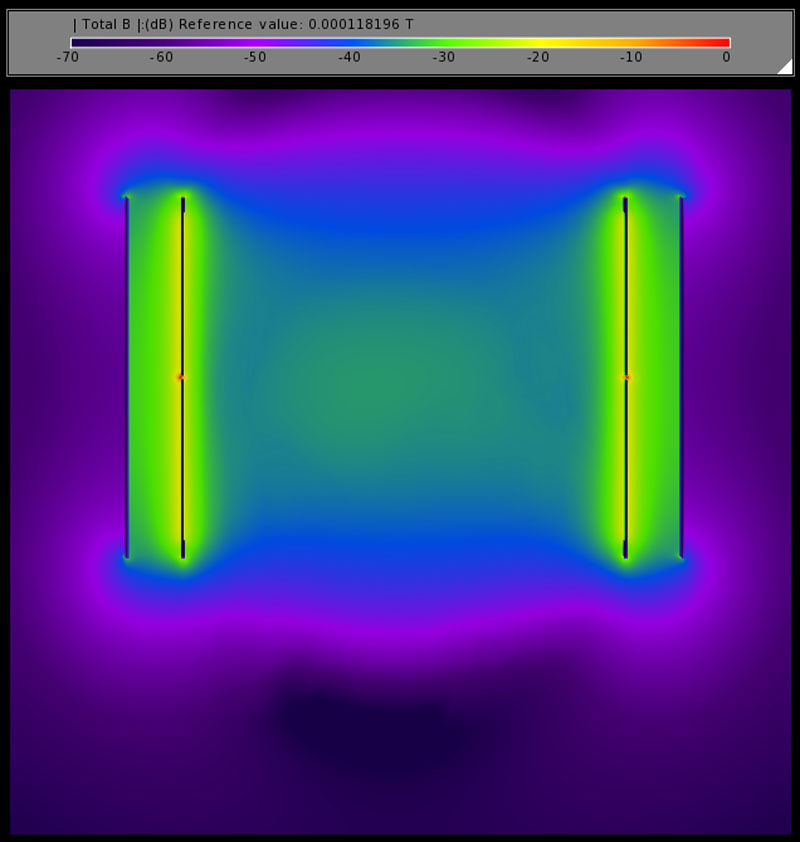
Figure 9: B on the sagittal plane of the loaded coil.
During the simulation of the loaded coil, the thermal sensor determined the increase in temperature within the head due to the impact of the radiated fields from the birdcage. The thermal analysis accounts for the heating from dissipated power in the tissues, heating from metabolic processes, and cooling from blood perfusion. In Figures 10 and 11, the temperature increased the most in the front of the face near the eyes and nose, but heating can also be seen under the skull near the brain. The maximum temperature rise for a 1 W input is quite small and is less than 0.05 degrees after an exposure of 3 minutes.
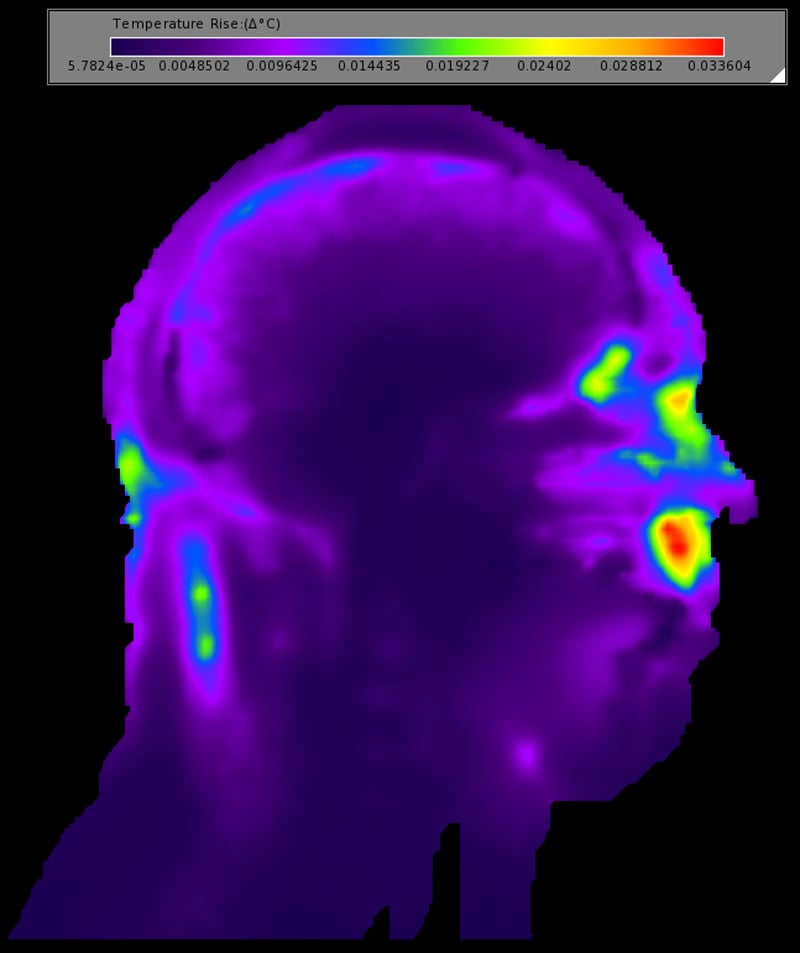
Figure 10: The temperature rise from the birdcage coil in the sagittal plane of the head.
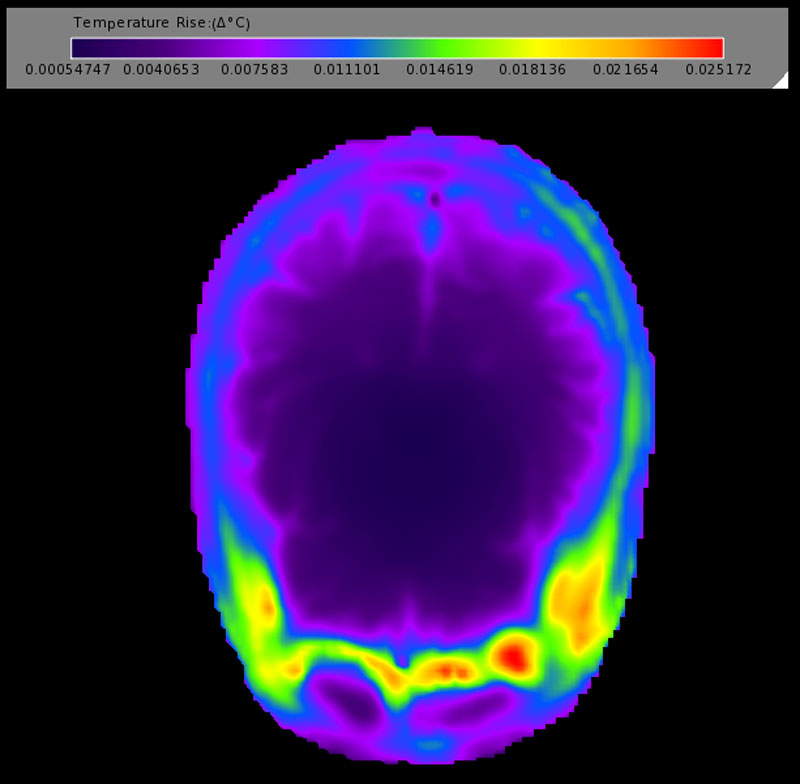
Figure 11: The temperature rise from the birdcage coil in the axial plane of the head.
Reference
-
Wanzhan Liu, Christopher M. Collins, Pamela J. Delp, and Michael B. Smith, “Effects of End-Ring/Shield Configuration on Homogeneity and Signal-to-Noise Ratio in a Birdcage-Type Coil Loaded With a Human Head,” Magnetic Resonance in Medicine, no. 51, pp. 217-221, 2004.
Request Project Files
Thank you for your interest in this application example. Please complete the form below to download the Temperature Rise Simulation in 64 MHz Birdcage Coil project files.
